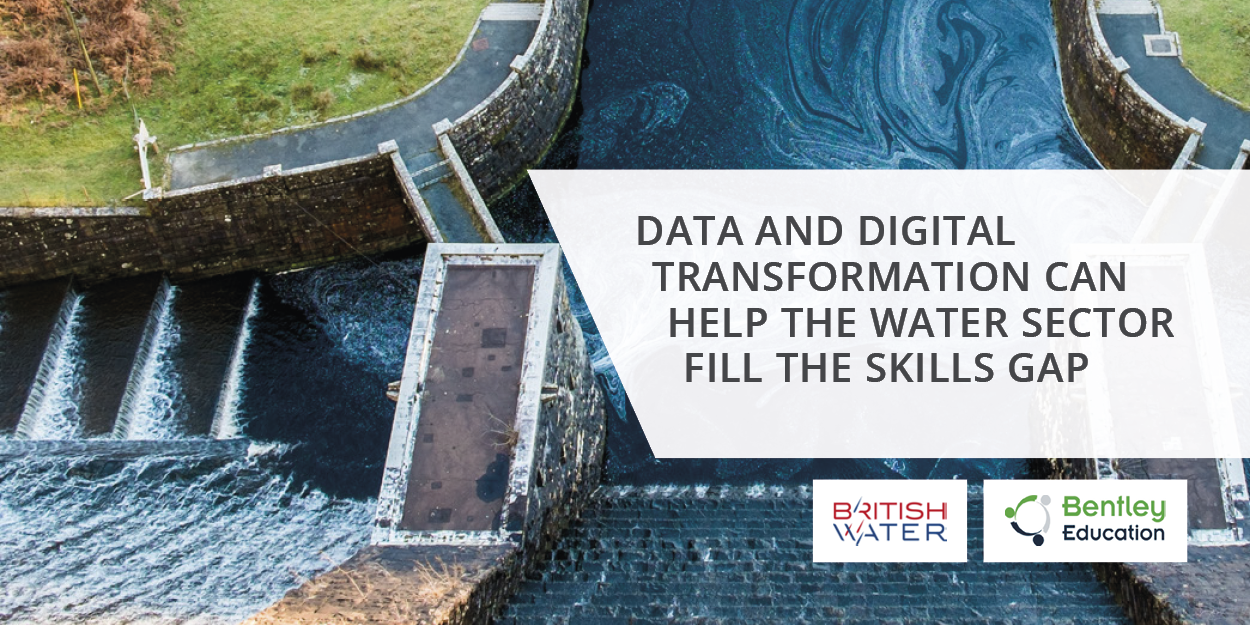Data and Digital Transformation Can Help the Water Sector Fill the Skills Gap
04 October 2022
Posted by: Neilas Svilpa

Data and Digital Transformation Can Help the Water Sector Fill the Skills Gap Water Utilities Are Looking to Going Digital to Provide The Best Service to Their Customers and Attract a New Generation of Employees Britain's Water Industry Mark Coates, International Director of Public Policy and Advocacy, Bentley Systems Britian's Water Industry Britain’s water industry is having to deal with aging infrastructure across its U.K.-wide network, round-the-clock management of existing infrastructure—including 88,000 kilometers of pipes—and an ever-growing population, with rapid urban development across our towns and cities. On top of these issues, the climate crisis poses an additional challenge to the sector, as hotter and drier weather places further strain on stretched water supply and infrastructure. While many industries currently suffer from skills shortages, the issue is particularly acute in water. The industry is struggling to fill 35% of vacancies, compared with the national average of 23%. It is anticipated that around 63,000 vacancies will need to be filled across the sector in the next five years. As the industry becomes more high-tech, it will need to attract more tech-savvy graduates to an industry that is not traditionally considered technological. Just 8% of the industry’s workforce is currently under the age of 24, and more than a fifth are less than a decade away from retirement age. To attract people into new skilled jobs, the sector needs to undergo a data and digital transformation. We have seen how water companies can create a vibrant culture of innovation within their organisations, but to fully embrace this modern and more efficient approach, the industry must get better at developing data-driven strategies across the system. “ In future years, as the management of water becomes even more important, the sector has an opportunity to become more attractive to tech savvy and purpose-driven millennials and members of Generation Z.” To achieve this goal, they must harness the power of data and going digital to improve modelling and forecasting, as well as improve operational intelligence and insight for proactive maintenance and asset management to safely extend the life of water infrastructure assets. By digitalizing, the water industry can embrace longer-term strategic thinking beyond the current AMP cycle. Organizations could plan five years or more ahead, account for wider modelling on external factors such as land usage and climate change, and use asset health indexing to mitigate risk and provide evidence-based rationales for network and plant asset management decisions. With rapid advancements in artificial intelligence (AI), machine learning, digital twin technology, and data analytics, there are now plenty of tools that the water sector can take advantage of to improve efficiency and reduce disruption. Delivering a safe and secure supply of water has always been vitally important—and never more so than now. MIT researchers predict that more than half the world’s projected 9.7 billion people will live in water-stressed regions by 2050. The water sector can take cues from industries like oil and gas, where sophisticated digital twin technology has been successfully implemented. For example, BP has increased its output by 30,000 barrels and rapidly reduced engineering disruption with its APEX system, which virtually duplicates the company’s global production chain. In the electric power industry, the advanced digitalization of asset management practices led EPCOR Utilities to reduce the average duration of system interruptions by 43% and strengthened their long-term planning for capital investments. In 2019, Anglian Water became the U.K.’s first water organization to implement digital twin technology, creating a digital representation of the region’s water treatment and distribution infrastructure to pinpoint where leaks are likely to happen before they actually do. More recently, Anglian expanded by demonstrating advanced climate resilience modelling using its digital twin at COP26 in November. AI and machine learning can also greatly benefit the sector. In North West England, United Utilities used a large-scale AI platform to gain insight into their network, ultimately leading to a 22% saving on water bills in one part of the greater Manchester area. While new technology can help the sector reach its goals for AMP7 and beyond, it will need to consider investing in skills and the security of its data to maximise the potential of new technology. Any industry that harnesses data and digital must be alive to risks of hacks and data breaches. Water companies deal with critical infrastructure that millions of people across the U.K. rely on, and failure to protect these assets could leave the system exposed to domestic and international threats. Managing these threats requires teams of highly-trained cyber-security experts—a workforce that attracts skilled high-tech jobs into the water industry. It is paramount that the sector invests in training new and existing staff to take advantage of new technology. By embracing AI and going digital, the sector can create new high-tech jobs for skilled people who might not have considered working in the water industry. In future years, as the management of water becomes even more important, the sector has an opportunity to become more attractive to tech savvy and purpose-driven millennials and members of Generation Z. As the industry shifts its focus towards long-term sustainability and high-tech solutions to its challenges, it can develop a generation of talented people in the sector with the digital skills to overcome the challenges of today and prepare for the challenges of tomorrow. In doing so, the water industry would be wise to re-evaluate its value proposition to customers as a highly advanced and sustainable public service.
|